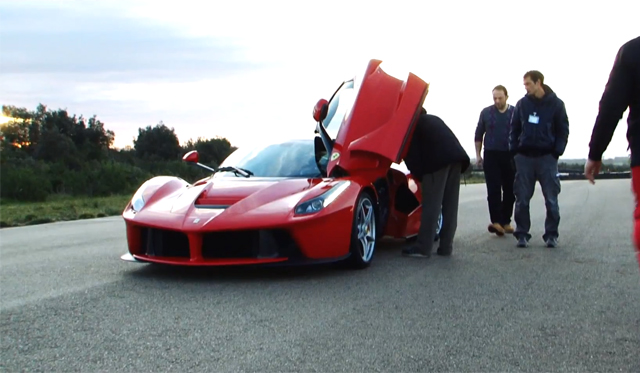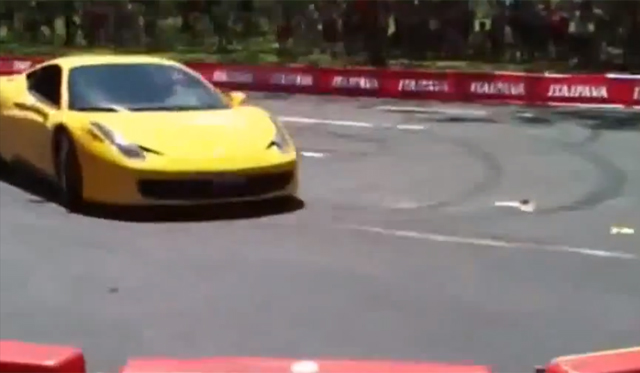
When the topic of stripping old paint comes up, the word
"laborious" quickly springs to mind. The fact is there's absolutely
nothing sexy about removing old paint, but if you want your project car or
truck to look new again, this less-than-pretty process is step one.
There are only a few ways to liberate metal from a veneer of
paint--sanding, media blasting, scraping or chemical stripping. Which of those
methods is best has sparked many, many debates, however.
Sanding or scraping, with or without the aid of paint
stripper, is the easiest for the home restorer. But both methods are messy and
time consuming. Media blasting is fast and wildly effective. However, it
requires special equipment, makes a mess and can lead to distorted sheetmetal
if not executed with the utmost caution, and some respect for the process.
Sending a car out to be dipped in a vat of paint-dissolving
chemicals results in squeaky-clean metal--the perfect foundation for any
restoration. However, the vehicle must be completely disassembled, then shipped
to a facility where the work is done--and there isn't one in every town.
So which method is best? That's up to you, but it really
depends on the condition of your car's finish as well as your budget.
Sanding and Scraping
Many experts agree that if a vehicle is sporting only a factory finish and that
finish is largely intact, then it's best to scuff it with 220- to 400-grade
paper followed by a sealer, primer and paint. Of course, any spots requiring
bodywork will have to be stripped to bare metal first.
But let's say your car has a build up of paint that, layer
for layer, would rival a character in a Dostoevsky novel. Well, in that case,
there's serious stripping to be done.
If your intent is to tackle the job yourself and you have a
good air compressor, a dual-action sander loaded with 80-grade paper is a
formidable weapon against old paint. If you're doing an entire car, buy a roll
of the self-adhering discs and change them frequently--grinding away with a
plugged-up disc just wastes time and energy.
When wielding a DA, don't hold it in one spot and push down
like you're trying to bore a hole through the paint. Instead, fan it out over a
broad surface the way you would a buffer--this prevents heat from building up
in one area, distorting the panel.
In some rare cases it might be possible to actually scrape
paint off a panel with razor blades. While this produces no dust and won't heat
up the metal, it is every bit as mind-numbingly tedious as it sounds. Often
it's very meticulous types who take this approach, and it's commendable. But
life is short, and just think how fast a DA would strip off that paint if a
razor blade can lift it...
Media Blasting
It's a commonly held belief that sandblasting sheetmetal is a no-no. However,
if the body panels are seriously rusted and large portions of the panels are
going to be replaced, grains of sand or bits of metal slag propelled by 80-100
p.s.i. of compressed air can do wonders for digging deeply embedded rust out of
pits and pockmarks. The keys are:
Use a gentle medium like DuPont's Starblast or even glass
bead or silicon carbide media from TP Tools;
Keep the air pressure as low as possible without constantly
clogging the tip (or wasting too much sand) and;
Most importantly, fan the spray out over a broad area,
preventing the buildup of heat on any one panel. It's tempting to blast a small
area down to bare metal, then move over six inches and repeat, but this is a
surefire way to make your vehicle's panels as wavy as a North Atlantic winter.
Instead, keep the tip in constant motion and imagine you are rinsing off the
car with sand, the way you would rinse off dirt with a hose.
Soda blasting has become a popular method for removing
paint, particularly from surfaces that would be destroyed by sand, like
fiberglass. It's a very benign process, but it won't dig rust out badly of
pitted metal.
If you have the space, it is possible to blast a car at
home. A good shop air compressor might be able to keep up with a small
hobbyist-grade sand blaster, but it won't be able to recover quickly enough to
properly power a larger blaster. The truth is, small blasters like those sold
at Sears or Harbor Freight are great for wheels and small
parts, or spot blasting badly pitted portions of a panel, but for an entire
chassis or body, you might want to consider renting a tow-behind compressor and
a large blaster--or farming the job out altogether to someone with experience
blasting sheetmetal.
If the glass is in the vehicle you'll need to protect it
with cardboard or light plywood, duct taped in place--or better still, remove
all glass panels. A couple of layers of duct tape works pretty well to protect
items that you don't want blasted.
Once the panel has been blasted, sand it with 80- to
100-grade paper to knock down the roughness (you'll be amazed at how quickly it
looks like new, smooth metal!) then prime quickly, as rust will start to form
almost immediately.
Chemical Stripping
There are dozens of good chemical paint strippers on the market designed for
automotive hobbyists and restorers to use at home. In fact, this is a great way
to remove paint without risking damage to the car, though it takes considerable
patience, which some people don't have, and time that professionals might not
want to spare.
On a car with multiple layers of paint, chemical stripper
will remove one layer at a time. Just apply it to the panel with a paintbrush,
let it wrinkle the finish and scrape it off with a paint scraper. Work on small
sections at a time, applying the stripper over and over until the body is bare.
It's a good idea to put a tarp down to make cleanup easier, and the entire car
should be washed with soap and water after using the stripper.
Without a doubt, the most thorough way to remove paint from
a vehicle is to have the entire body dipped in a vat of dissolving chemicals;
one company that's well known for this service is Redi Strip. The downside is
that anything that isn't sheetmetal must be removed from the vehicle first, and
if the stripped body isn't properly cleaned of the caustic chemical, it can
remain in tight seams and small cavities and will harm the new paint.
Dale Lodor of Auto Restoration Depot in Wauchula, Florida,
has been in the restoration business for the last 36 years, and has been
stripping and derusting for the past five. He dips all of his own projects in
his two-tank, total-immersion stripping system and handles stripping chores for
a variety of professional restorers. Half of his business, however, comes from
hobbyists and do-it-yourselfers.
"The good professional restoration shops and many
amateurs go this route," Dale said. "You can see what you've got
after the car has been dipped. It gets in every place and takes everything
totally off it."
The two-tank process immerses a body first in a tank that
degreases and loosens all of the paint. Then, with a heated pressure water
wash, all paint, grease and scale is removed. The second tank is full of an
alkaline electrolytic solution through which an electric DC current is passed.
The body emerges shiny, with every pit and corner rust-free.
Stripping paint definitely isn't sexy, but with all of the
options available there's no reason that a home restorer can't free a beautiful
body from the fetters of failing paint--the first step in the making of a
drop-dead gorgeous restoration.
source:
http://www.hemmings.com/hcc/stories/2007/11/01/hmn_feature7.html
by Mike McNessor
http://www.fzrestoration.com











